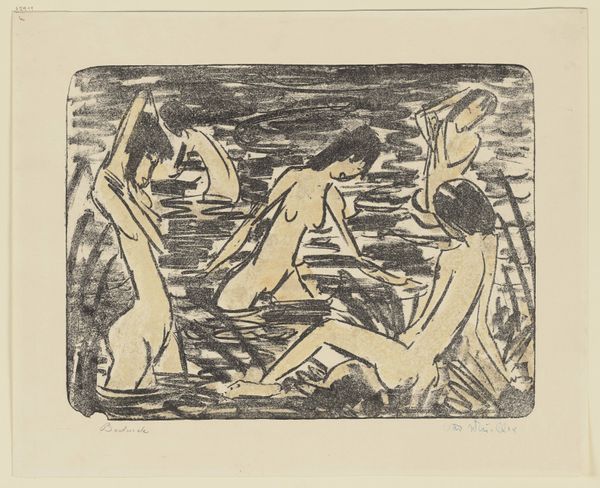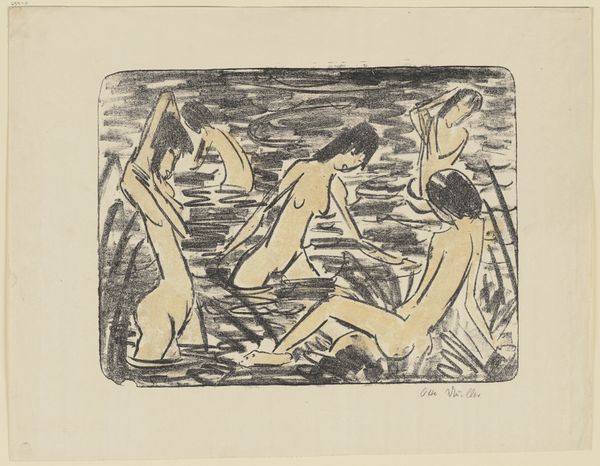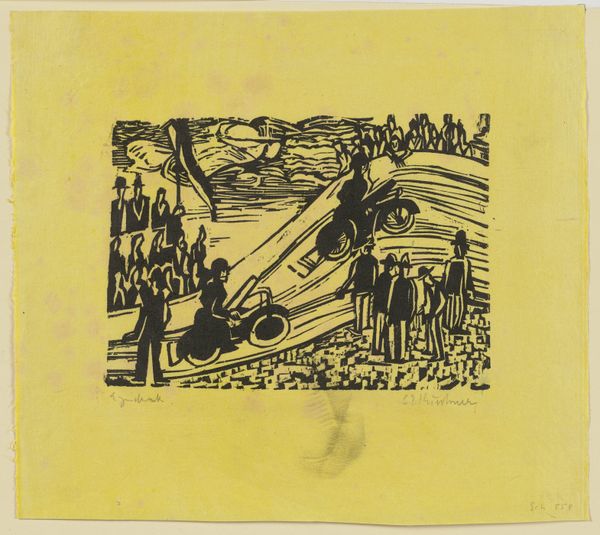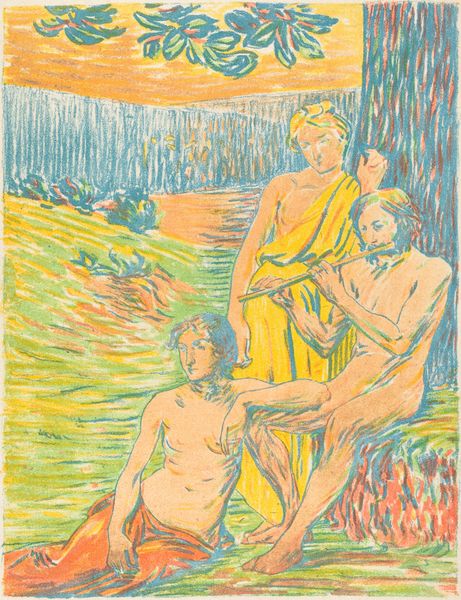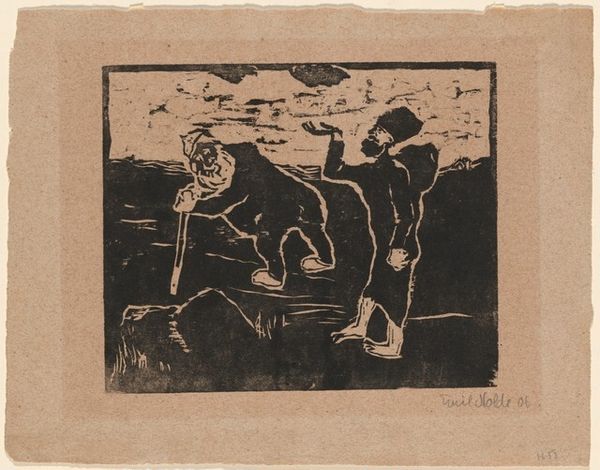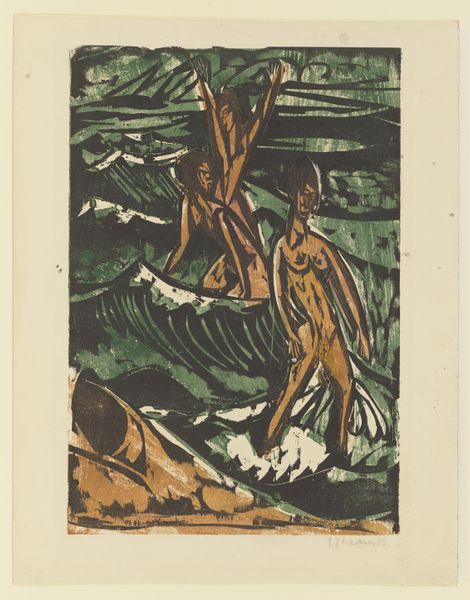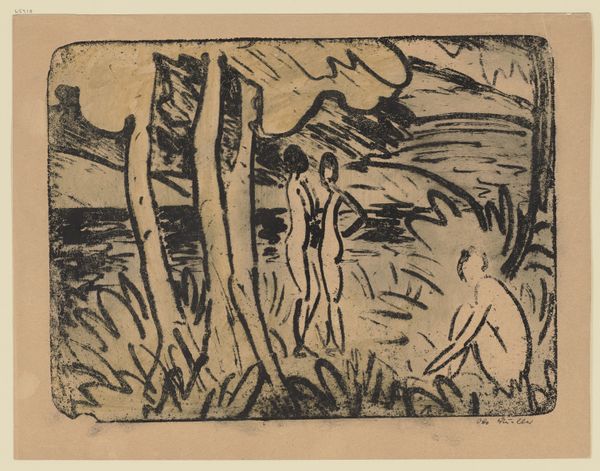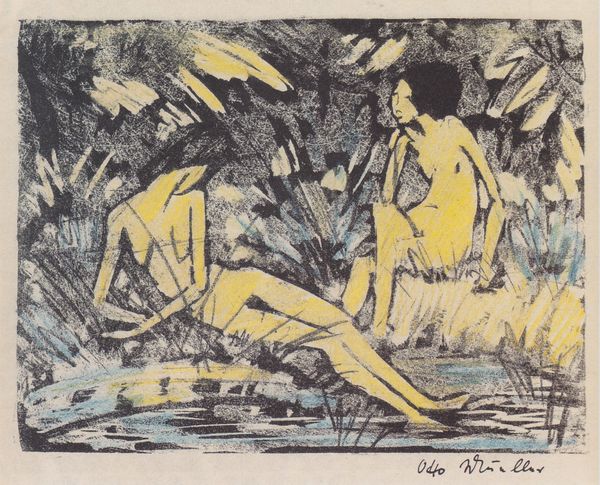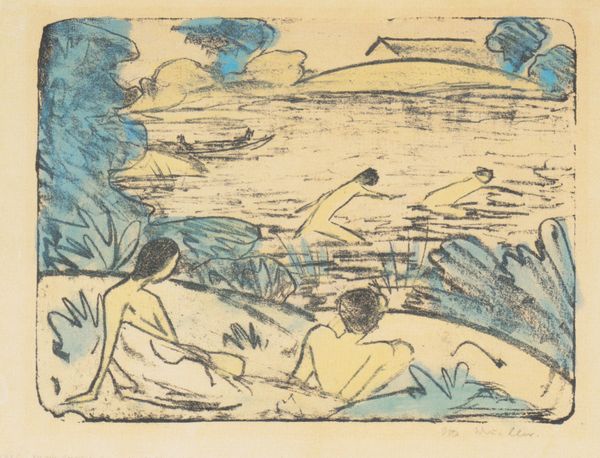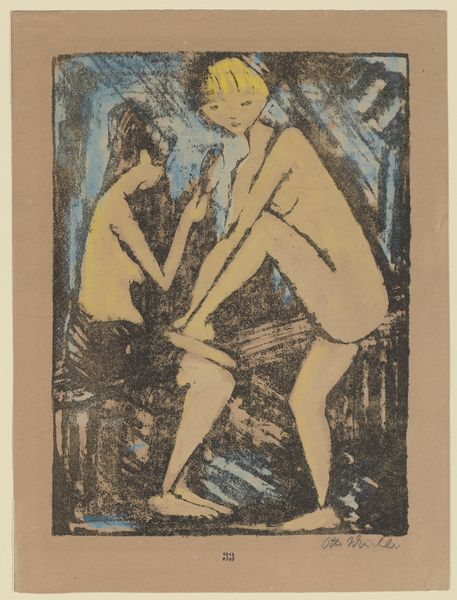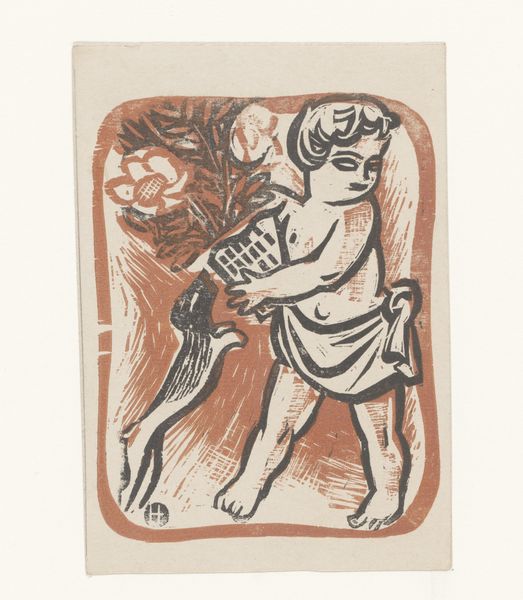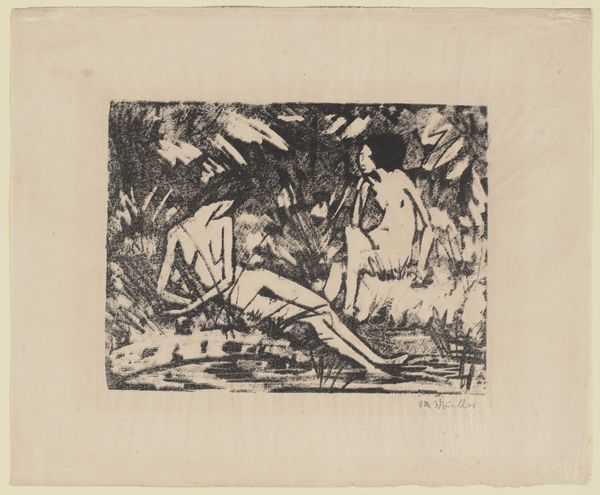
drawing, print, linocut
#
drawing
#
linocut
# print
#
linocut
#
landscape
#
figuration
#
expressionism
Dimensions: 380 × 448 mm (image); 465 × 601 mm (sheet)
Copyright: Public Domain
Curator: Here we have Edvard Munch’s 1899 linocut print, "Boys Bathing," housed right here at The Art Institute of Chicago. It immediately strikes me with its layered, almost elemental use of color—that cool blue, the verdant green, the warm gold—evoking a sense of nostalgia, maybe even longing. Editor: It feels charged with the energy of burgeoning sexuality. Look at the confident stance of the central figure. Yet the stark, simplified forms of the boys swimming disrupt the potential for idealized masculinity, suggesting a more complicated story about youth and identity. Curator: The figures, in their reduction, almost become archetypes, symbols themselves. We see figures emerging from and dissolving into water; a motif echoing a psychological or perhaps even a spiritual rebirth. Water is the classic symbol of purification, after all, often about undoing. Editor: I see how you’re drawn to the symbolism. I think Munch is commenting on the performative nature of gender. The way the standing figure is posed versus the playful abandon of the swimmers feels pointed. Like the burden of social expectation even at this young age. Curator: His choice of the linocut is crucial to how it operates as image. It is worth mentioning how in linocut the artist is removing what is NOT wanted. So this image comes from what isn’t; like something being born out of trauma or struggle? Munch was known for that. Editor: Exactly! The crude carving and stark color blocks contribute to a rawness, stripping away any veneer of innocence associated with childhood. It feels deliberate, given the history of art having often portrayed naked male forms as these Apollonian ideals; and Munch disrupts this patriarchal fantasy by showing a complex portrayal of childhood, and not the expected, and often cliché presentation. Curator: And, you know, water—beyond purification—can symbolize the unconscious. The swimmer’s facelessness in their abstraction, the way their bodies form geometric shapes; is about the power of unconsciousness. This also applies to those unseen powers that force you to self actualize in a world such as ours. Editor: Definitely! This linocut offers such potent visuals. It reveals the deep connection between visual imagery and lived experiences, making us contemplate identity beyond simple labels. Curator: Ultimately, Munch delivers something very primal, deeply ingrained within us all; that even a landscape scene evokes our human drives to categorize ourselves; in essence. Editor: It's more than just a scene; it’s an interrogation of the male form as a political statement!
Comments
No comments
Be the first to comment and join the conversation on the ultimate creative platform.
